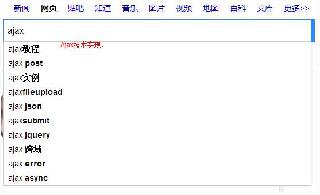python数字转对应中文的方法总结
本文操作环境:
windows7系统,DELL G3电脑,python3.5版
python实现将阿拉伯数字转换成中文
第一种转换方式:
1 --> 一 12 --> 一二def num_to_char(num): '''数字转中文''' num=str(num) new_str='' num_dict={'0':u'零','1':u'一','2':u'二','3':u'三','4':u'四','5':u'五','6':u'六','7':u'七','8':u'八','9':u'九'} listnum=list(num) # print(listnum) shu=[] for i in listnum:# print(num_dict[i])shu.append(num_dict[i]) new_str=''.join(shu) # print(new_str) return new_str
第二种转换方式:
1 --> 一 12 --> 十二 23 --> 二十三_MAPPING = (u’零’, u’一’, u’二’, u’三’, u’四’, u’五’, u’六’, u’七’, u’八’, u’九’, u’十’, u’十一’, u’十二’, u’十三’, u’十四’, u’十五’, u’十六’, u’十七’,u’十八’, u’十九’)_P0 = (u’’, u’十’, u’百’, u’千’,)_S4 = 10 ** 4def _to_chinese4(num): assert (0 <= num and num < _S4) if num < 20:return _MAPPING[num] else:lst = []while num >= 10: lst.append(num % 10) num = num / 10lst.append(num)c = len(lst) # 位数result = u’’for idx, val in enumerate(lst): val = int(val) if val != 0:result += _P0[idx] + _MAPPING[val]if idx < c - 1 and lst[idx + 1] == 0: result += u’零’return result[::-1]
实例扩展:
#!/usr/bin/python#-*- encoding: utf-8 -*-import typesclass NotIntegerError(Exception): passclass OutOfRangeError(Exception): pass_MAPPING = (u’零’, u’一’, u’二’, u’三’, u’四’, u’五’, u’六’, u’七’, u’八’, u’九’, )_P0 = (u’’, u’十’, u’百’, u’千’, )_S4, _S8, _S16 = 10 ** 4 , 10 ** 8, 10 ** 16_MIN, _MAX = 0, 9999999999999999def _to_chinese4(num): ’’’转换[0, 10000)之间的阿拉伯数字 ’’’ assert(0 <= num and num < _S4) if num < 10: return _MAPPING[num] else: lst = [ ] while num >= 10: lst.append(num % 10) num = num / 10 lst.append(num) c = len(lst) # 位数 result = u’’for idx, val in enumerate(lst): if val != 0:result += _P0[idx] + _MAPPING[val]if idx < c - 1 and lst[idx + 1] == 0: result += u’零’return result[::-1].replace(u’一十’, u’十’) def _to_chinese8(num): assert(num < _S8) to4 = _to_chinese4 if num < _S4: return to4(num) else: mod = _S4 high, low = num / mod, num % mod if low == 0: return to4(high) + u’万’ else: if low < _S4 / 10:return to4(high) + u’万零’ + to4(low) else:return to4(high) + u’万’ + to4(low) def _to_chinese16(num): assert(num < _S16) to8 = _to_chinese8 mod = _S8 high, low = num / mod, num % mod if low == 0: return to8(high) + u’亿’ else: if low < _S8 / 10: return to8(high) + u’亿零’ + to8(low) else: return to8(high) + u’亿’ + to8(low) def to_chinese(num): if type(num) != types.IntType and type(num) != types.LongType: raise NotIntegerError(u’%s is not a integer.’ % num) if num < _MIN or num > _MAX: raise OutOfRangeError(u’%d out of range[%d, %d)’ % (num, _MIN, _MAX)) if num < _S4: return _to_chinese4(num) elif num < _S8: return _to_chinese8(num) else: return _to_chinese16(num) if __name__ == ’__main__’: print to_chinese(9000)
以上就是python数字转对应中文的方法总结的详细内容,更多关于python数字怎么转对应中文的资料请关注好吧啦网其它相关文章!
相关文章:

 网公网安备
网公网安备